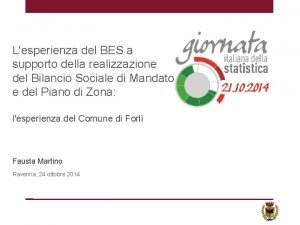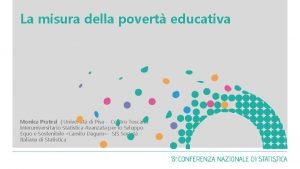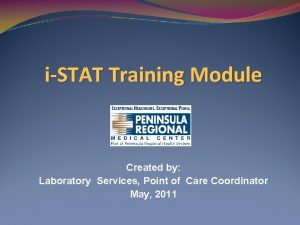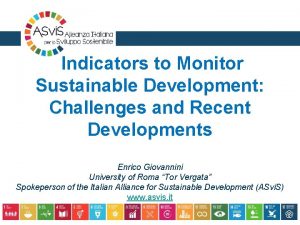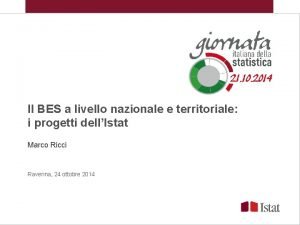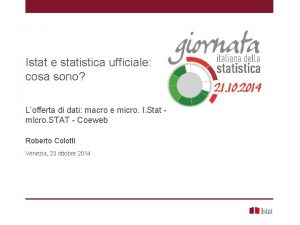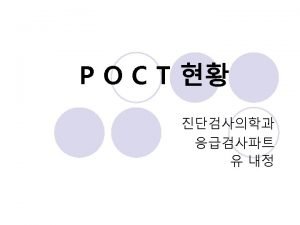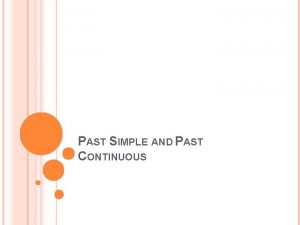Istat and household data the past and the






- Slides: 6

Istat and household data: the past and the future Giorgio Alleva President of the Italian National Institute of Statistics The Bank of Italy’s Analysis of Household Finances Rome, 4 December 2015

Outline The past § Overview of Istat’s household data production The future § A new European framework § Istat’s strategy for building an integrated system of household surveys Challenges ahead The Bank of Italy’s Analysis of Household Finances Rome, 4 December 2015

The past: overview of Istat’s household data production 1954 Labour Force Survey 1968 Survey on household income 1973 Survey on household consumption 1993 Multipurpose social surveys 1994 European Commission Household Panel 2004 EU-Statistics on income and living conditions 2014 Household budget survey Today 4 sample surveys, 200, 000 households, nearly 10, 000 variables The Bank of Italy’s Analysis of Household Finances Rome, 4 December 2015

The future: a new European framework § Now: assemblage of fragmented domain-specific regulations, not always harmonized § For the future: a new strategy based on multiple data sources and cross-cutting integration of existing surveys § Massive adoption of administrative data for the production of official statistics § A re-engineering of the system of social statistics § Goals: § to minimize redundancy and the burden on respondents § to increase data quality and detail The Bank of Italy’s Analysis of Household Finances Rome, 4 December 2015

The future: Istat’s strategy for social surveys § Building an integrated system of household surveys. Two scenarios: § Ex-post harmonization of concepts and definitions on existing surveys § Ex-ante integration of the system of social statistics: making the system more flexible. A two-phase sample survey: § First phase: a limited set of structural core variables on a sample of households (sex, age, household composition, …) § Second phase: information on specific socio-economic variables on a number of sub-samples of households § For NSIs: moving away from a fragmented stovepive approach towards a more complex architecture § From micro to macro data: new measures of wellbeing and disparities in a framework consistent with the system of national accounts The Bank of Italy’s Analysis of Household Finances Rome, 4 December 2015

Challenges ahead Three key challenges: § to strengthen the collaboration with the scientific community § to increase the availability of detailed data for policy makers § to capture at the micro level the interactions among households and firms The Bank of Italy’s Analysis of Household Finances Rome, 4 December 2015
